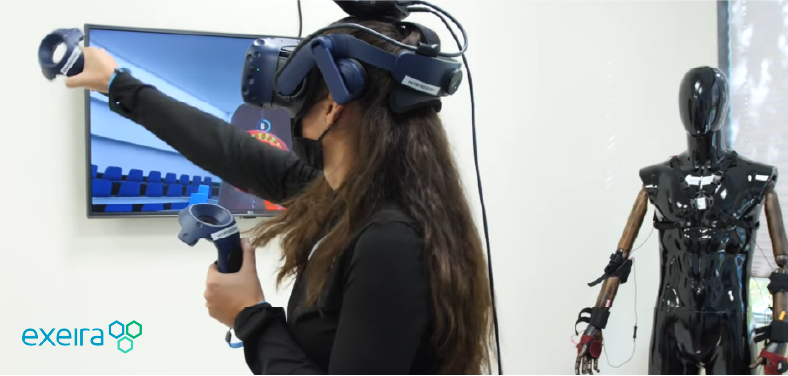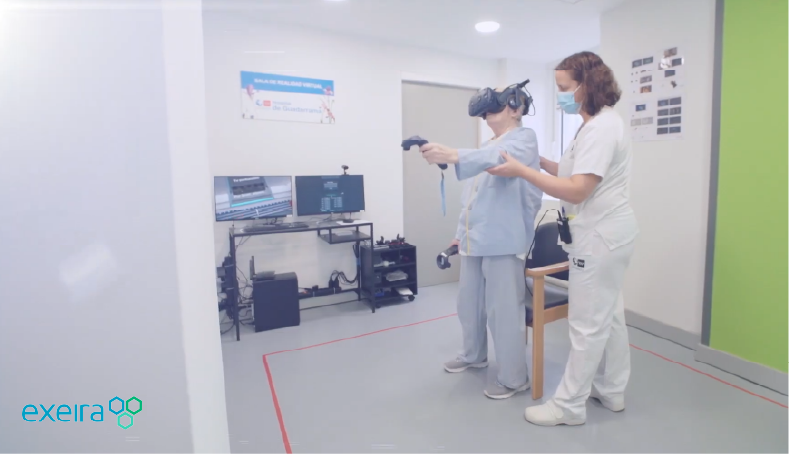In the digital age in which we live, health and technology have come together in a powerful alliance to revolutionize the way we access and manage our medical and health care. The term “eHealth” has become a ubiquitous concept that encompasses the entire spectrum of electronic health, from mobile apps and wearable devices to electronic health records and online medical consultations.
In this article we will delve into one particular technology: virtual reality, its benefits, challenges, and how it is transforming the way we receive medical care and interact with healthcare professionals.

In the eHealth universe, there is one technology that stands out and is radically changing the way we experience healthcare: virtual reality (VR). VR is no longer simply an entertainment tool to immerse us in virtual worlds, and has become a promising resource in healthcare.
Through the use of VR viewers and motion tracking devices, patients can be transported into immersive digital environments ranging from relaxation in natural landscapes to the simulation of complex medical procedures.
The incorporation of VR offers particularly relevant benefits in the field of rehabilitation, potentially transforming the care and well-being of individuals.
Traditional rehabilitation, until recently, relied on conventional and limited methods to restore motor or functional skills in patients. Health professionals used physical and occupational therapies that required the patient’s active participation in repetitive exercises. Although effective to some extent, these techniques were often monotonous and unmotivating, making patient adherence and progress difficult.
However, with advances in virtual reality (VR), rehabilitation has undergone a significant change. VR provides an interactive and immersive tool that allows patients to participate in more engaging and stimulating therapies. Through devices such as VR goggles and motion controllers, patients can perform virtual exercises that are tailored to their individual needs and therapeutic goals.
With VR we achieve greater patient adherence thanks to the gamification of traditional therapy, as well as a number of benefits, and which have been scientifically evidenced through numerous studies.
Among the main benefits that the incorporation of virtual reality in rehabilitation can offer us, is the variety of exercises that we have at our disposal and the high customization to the needs and therapeutic goals of each patient.
In exeira we have developed more than 10 environments, with more than 120 exercises fully customizable to the needs and goals of each patient, supported by clinical evidence.
This allows us to simulate real-life situations relevant to rehabilitation, such as activities of daily living, balance training, coordination exercises and much more.
Virtual reality offers a safe and controlled virtual environment that allows therapists to adjust parameters and difficulties according to the individual needs of each patient.

At Exeira, we have devices such as EMG, a technique to measure and record the electrical activity of superficial muscles; we also have force platforms, which allow us to measure and analyze the force exerted during different physical activities, and finally we have MOCAP: sensors placed around the body to capture and record movements in real time.
With all these devices we can sensor, monitor and analyze the patient in real time, either while performing the therapy in virtual reality, or in isolation, depending on the needs of each patient.
With Exeira, all this data can be exported for report generation. This allows therapists and patients to track progress, identify areas for improvement and adjust interventions in a personalized way, facilitating a more efficient and evidence-based approach.

In conclusion, we are at a crucial moment where we must take full advantage of all the benefits that virtual reality can offer us in the field of rehabilitation. With its ability to offer immersive, personalized and stimulating therapies, VR has proven to be an invaluable tool in the recovery of motor and functional skills.
Now more than ever, it is essential to explore and develop new applications and technologies in this field, so that we can provide patients with the care they deserve and help them regain an optimal quality of life.